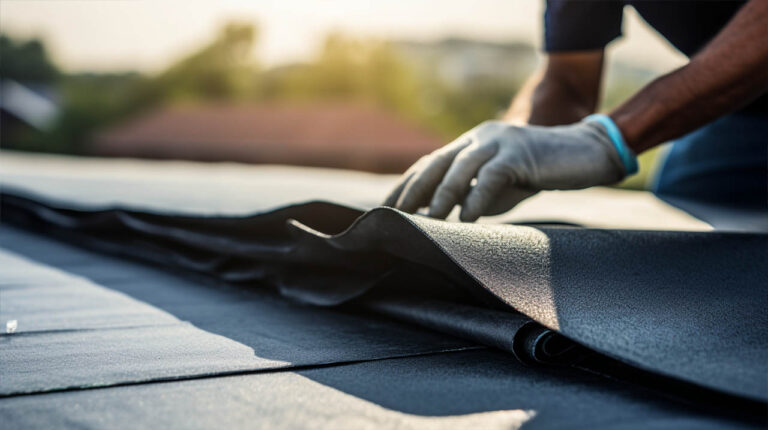Roof underlayment plays a pivotal role in ensuring the longevity and durability of your roof. As a homeowner, understanding the nuances between different types of underlayment can be instrumental in making an informed decision. In this guide, we delve deep into the differences between felt and synthetic roof underlayment, highlighting their pros and cons to help you make the best choice for your roofing needs.
Cost Implications
Felt underlayment, one of the oldest types of roof underlayment, is known for its cost-effectiveness. Available in two primary types, No. 15 and No. 30, it is often the preferred choice for budget-conscious homeowners. On the other hand, synthetic underlayment, primarily composed of polypropylene and polyethylene, tends to be pricier. However, its cost often justifies the benefits it brings to the table.
Water Resistance and Protection
When it comes to water protection, the two materials showcase distinct characteristics. Felt underlayment, while cost-effective, can quickly absorb water, leading to potential wrinkling. It’s imperative that shingles are promptly installed atop felt to establish a waterproof barrier.
Conversely, synthetic underlayment is designed to repel water. Its inherent moisture resistance ensures superior protection against the elements, keeping it free from wrinkles and mold.
Durability and Longevity
Durability is a significant factor when considering underlayment. Felt, being less robust, can sometimes succumb to tears during high winds or dry out under intense heat. Synthetic underlayment, with its robust nature, can withstand harsh winds and remains unaffected by UV rays or moisture during installation.
Safety During Installation
Safety is paramount during roof installation. Felt underlayment can pose challenges due to its slippery surface, making the installation process slightly more intricate. Synthetic underlayment, with its slip-resistant surface, ensures enhanced safety. Roofing professionals, like those at TecHero Roofing, appreciate the ease and security it offers, especially given the foot traffic during installation.
Ease of Installation
The weight of the underlayment can influence the installation process. Felt, being heavier, can be cumbersome for roofing contractors, potentially prolonging the installation time. Synthetic underlayment, being up to four times lighter and available in wider rolls, can expedite the installation process. If you’re seeking a swift installation, opting for a synthetic underlay, coupled with expert roofing services in Encino CA, can be a wise choice.
Making the Right Choice
Selecting between felt and synthetic underlayment is more than just a choice; it’s a decision that impacts your roof’s lifespan. While budget considerations are essential, it’s crucial to weigh all factors. If you’re uncertain about the best roof underlayment for your home, consider consulting with professionals. At TecHero Roofing, we pride ourselves on offering top-notch Encino roofing solutions tailored to your needs.
In conclusion
Both felt and synthetic underlayment have their unique advantages. Your choice should align with your budget, desired durability, and installation preferences. Remember, a well-informed decision today can ensure a robust and long-lasting roof for years to come.


